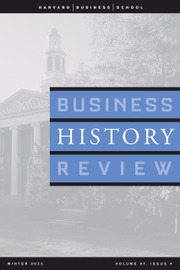Almost 200 years ago, in 1825, the Erie Canal, a 363-mile “artificial river” with termini in Buffalo and New York City opened for business with much pomp. It was a significant part of the “canal era” (c. 1790–1850) and the larger “transportation revolution” that historian George Rogers Taylor dates between 1815 and 1860. The Erie Canal, which detractors derisively called “Clinton’s Ditch” after Governor DeWitt Clinton, connected the Great Lakes to the eastern seaboard and remade New York City into a leading center of international trade and New York State into the Empire State.
Rather than writing about the positive economic and social effects of the canal as most scholars have done, author and State University of New York at Oneonta (SUNY Oneonta) English professor Mark S. Ferrara provides a new perspective of “The Raging Erie” during the canal era that focuses on the “ordinary folks who experienced firsthand the dislocating and alienating social consequences, the extreme class and income inequality, that this waterway wrought…(It) critiques an unbridled form of early American capitalism that permitted employers to exploit labor…and it lays bare the consequences of a shift from farm and family production to a market economy and industrialization” (p. 3).
More a social and labor history than a business history (Ferrara discusses business tangentially), The Raging Erie—across seven chapters that rely mainly on secondary sources—examines how the Iroquois Confederation (“Iroquoia”), a powerful group of Native Americans, were removed from their land to make way for the canal; the widespread animal abuse along the towpath; the exploitation of child labor; the rough-and-tumble existence of the largely Irish immigrant laborers; the hardship and disenfranchisement of women; the struggles of slaves and free Blacks seeking freedom in the North; and the vice and crime that plagued the towns along the canal. Death loomed large on the canal.
Ferrara writes in a lively, colorful, and engaging manner, and each detailed chapter may be read as a self-contained story of these different groups and their experiences on and along the canal. Sometimes, however, he strays from the banks of the canal to narrate a larger story, but these divergences keep the reader’s attention. The unavailability of primary sources that would give the featured individuals their own voice is unfortunate, but he nonetheless brings many of them to life with his skill as a storyteller. Most of these individuals were not well known, but Ferrara notes, “The stories of all these people have survived the ravages of time because their lives were exceptional, but their humble origins provide insight into the plights of the millions like them who suffered ‘slings and arrows’ of rapid industrialization along the canal corridor” (p. 201).
What made them exceptional was that they often sacrificed life and limb to help build the canal or champion important causes such as abolition, temperance, women’s rights, pacifism, prison reform, children’s hospitals, the banning of capital punishment and imprisonment for debt, universal education, access to higher education for marginal groups, and the amelioration of harsh working conditions for canal workers. Many of these movements were stimulated by religious revivalism, which spawned new religions such as Mormonism and intentional communities such as the Oneidas.
When the Erie Canal opened in 1825, it became a symbol of progress for the new nation, “a model for internal improvement, a testament to advancements in transportation and technology, an exemplar of self-governance and civic participation…(It) represented a triumph over nature and demonstrated Yankee ‘ingenuity’…” (p. 195). Yet, Ferrara argues, the canal also contained contradictions: “it brought more democracy (via the facility of movement, interconnection of social relations, and new understandings of social reform), but it simultaneously introduced more inequality into nineteenth-century life (by way of unequal wealth, social dislocation, and callous treatment of ‘essential workers’ in and around the canal zone)” (p. 197). In essence, the Erie Canal itself was a microcosm of capitalism.
So, on the eve of two-hundredth anniversary of the opening of the Erie Canal, now a waterway devoted mainly to leisure, Ferrara wants us not only to celebrate its many contributions to New York State and the nation but also to remember the thousands of women, men, children, and animals who gave life to the Erie Canal, sometimes at the expense of their own.
Professor Stanger has published articles and book chapters on the Larkin Company, employers’ associations, and labor relations in the printing and newspaper industries. He recently co-edited Union Organizing and Collective Bargaining at a Critical Moment: Opportunities for Renewal or Continued Decline? (2024), in which he wrote a chapter on newspaper industry labor relations.


